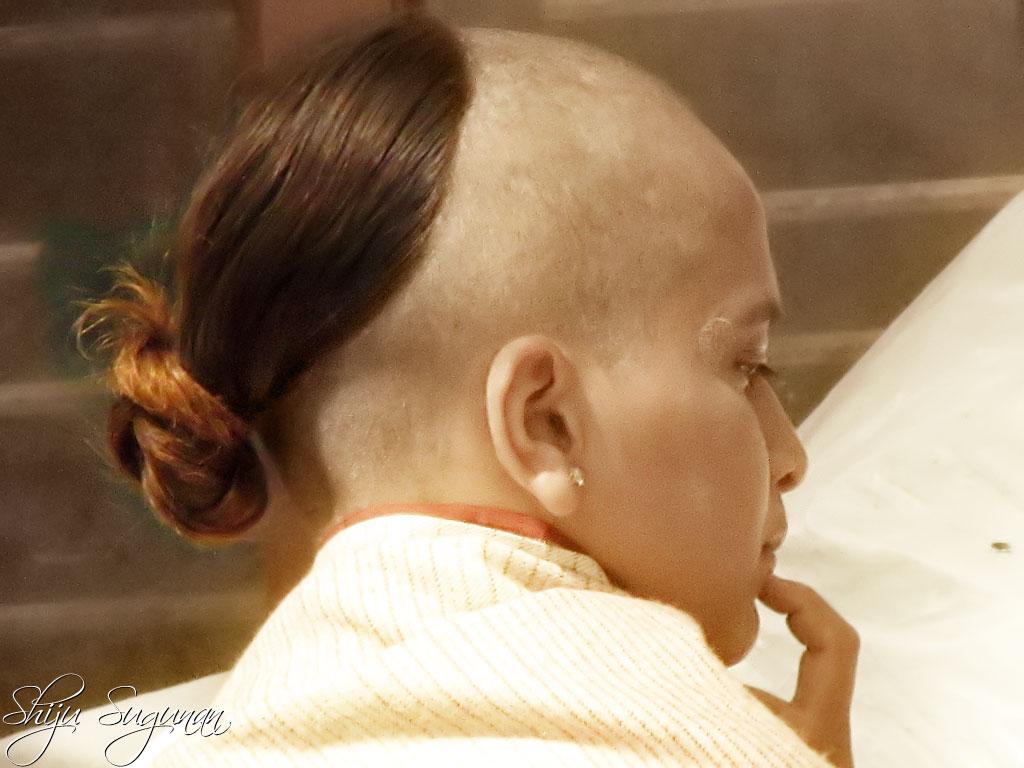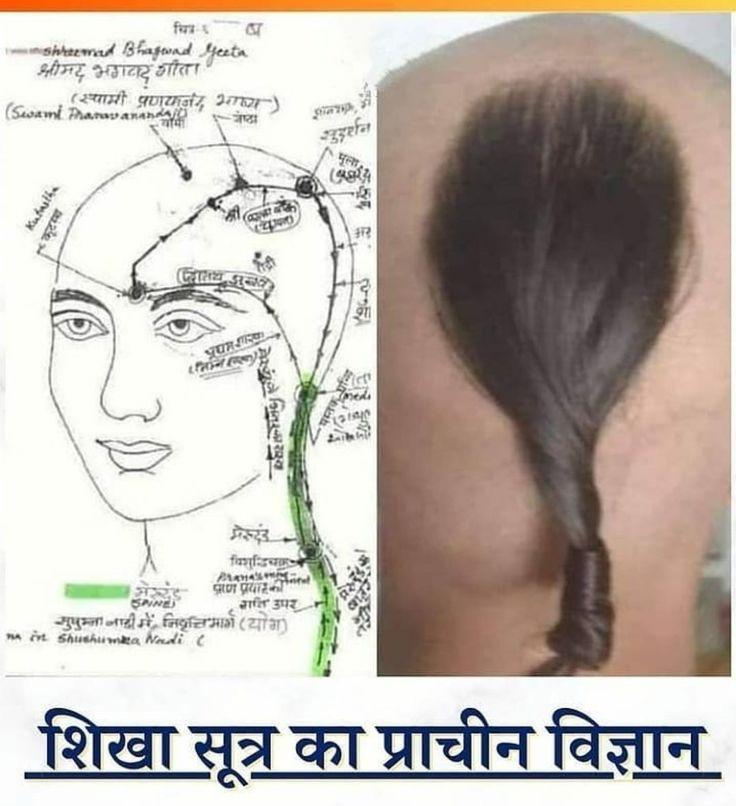- This topic has 0 replies, 1 voice, and was last updated by .
-
AuthorPosts
-
December 23, 2023 at 7:24 pm #1647Up::1
The Shikha: A Symbol of Devotion and Spirituality in Hinduism
The shikha, a tuft of hair kept at the back of the head, holds a deep and multifaceted significance in Hinduism. Its meaning transcends mere physical appearance, weaving itself into the fabric of spiritual practices and cultural identity. Let’s delve into the various layers of this sacred symbol:
1. Spiritual Significance
The shikha is seen as a symbol of ekanta bhakti, meaning one-pointed devotion to God. It represents a mind focused on supreme knowledge, unwaveringly dedicated to spiritual karmas. It is believed that the shikha acts as a channel for receiving transcendental grace. The upward direction of the hair symbolizes reaching towards the higher realms and connecting with the divine consciousness.Some interpretations associate the three strands of the shikha with the three debts a person owes: to the gods (deva), to the ancestors (pitra), and to the sages (rishi). Keeping the shikha serves as a reminder to fulfill these obligations.
2. Cultural and Social Significance
The shikha was historically a prominent marker of belonging to a particular dharmic (religious) community, particularly for Brahmins and other twice-born castes. It served as a visible symbol of adhering to the principles of Hinduism.Keeping the shikha short and well-maintained was seen as a symbol of physical and spiritual cleanliness. It also reflected discipline and self-control, crucial qualities for a spiritual seeker.
The style of the shikha varies across regions and communities within Hinduism. Some leave a single strand, while others braid three strands together. These variations add to the richness and diversity of the symbol.
3. Chakras and Energy Flow
In yogic traditions, the shikha is associated with the Sahasrara chakra, located at the crown of the head. Keeping the hair short is believed to facilitate the flow of energy through this chakra, enhancing spiritual awareness.
Variations in Shikha Styles Across Hindu Sects
The shikha, while a unifying symbol in Hinduism, manifests in diverse styles across different sects and regions.1. Vaishnavas: Many Vaishnavas, like Ramanandis and Madhvas, keep a single strand of hair as their shikha. This simple style reflects their focus on devotion and purity.
2. Shaivas: Three Strands: Shaivas, followers of Shiva, commonly braid three strands of hair as their shikha. This style symbolizes the three Gunas (Sattva, Rajas, Tamas) and the striving to transcend them.
3. Smarthas: Five Strands: Smarthas, followers of Adi Shankara, traditionally keep five strands of hair as their shikha. This represents the five elements (earth, water, fire, air, and space) and the interconnectedness of the universe.

4. Regional Variations:
-South India: In South India, the shikha is often worn shorter than in other regions. Some communities, like Iyengars, keep a single strand braided with a Rudraksha bead at the end.
-Nepal: In Nepal, Shaiva communities may keep their shikha in a bun style at the back of the head. This style is known as “Mundaa” and is considered sacred.
-Srivaishnavas: A sect of vaishnavism keeps broad Shikas than any other sect. They keep the full shkha that covers the back side of their head.
Remember, these are just a few examples, and variations exist within each sect and region. The specific style of the shikha is often passed down through families and communities, making it a meaningful part of one’s cultural and spiritual heritage.Conclusion
Ultimately, the shikha, in its diverse forms, represents the richness and adaptability of Hinduism. It serves as a personal reminder of one’s spiritual connection and a visible marker of belonging to a particular tradition.
It is important to note that the significance of the shikha can be personal and subjective, varying across individuals and traditions. Whether worn as a symbol of devotion, a mark of identity, or a reminder of spiritual goals, the shikha continues to hold a powerful place in the hearts and minds of many Hindus.
-
AuthorPosts
- You must be logged in to reply to this topic.